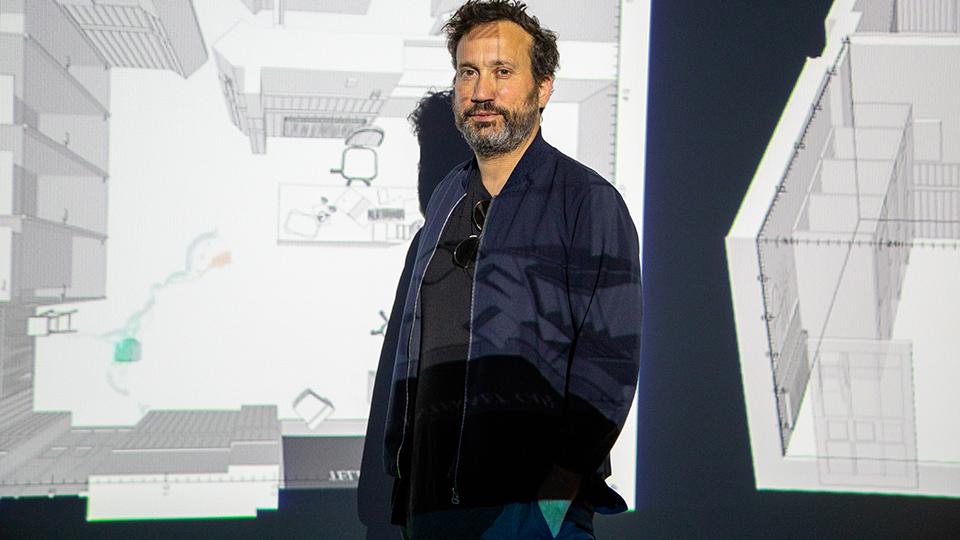‘Truth has to be made public in order to operate’ – 10 years of Forensic Architecture
Article
Goldsmiths-based research agency Forensic Architecture is marking 10 years since its formation with a series of major new exhibitions in London, Manchester and Berlin, presenting a body of work that has revolutionised the field of human rights.
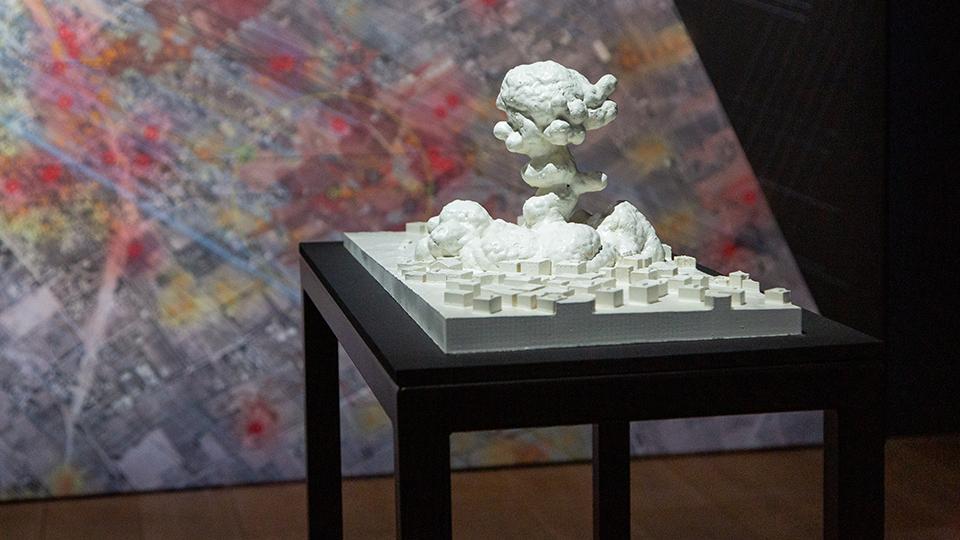
Cloud Studies at The Whitworth Gallery, Manchester (2 July – 17 October 2021), brings together, under one roof, examples of Forensic Architecture (FA) investigations which expose how states and corporations weaponise the air to suppress civilian protest, maintain and defend violent border regimes, and empower exploitative industries.
This significant retrospective is just the latest showcase for work that crosses the boundaries between art and forensic analysis, journalism and the law, and over the last 10 years has seen FA carry out investigations around the globe, covering land, sea, and air.
A brief history of Forensic Architecture
Founded by Eyal Weizman, Professor of Visual and Spatial Cultures in the Department of Visual Cultures, FA has grown to become an international and multidisciplinary ‘architectural detective agency’, composed of scholars, artists, filmmakers, software developers, journalists, archaeologists, lawyers, scientists, architects and others, developing innovative methods through which to hold states and corporations to account for human rights violations, environmental destruction, and land dispossession.
As a 2018 Guardian article describes it, FA “use whatever means they can to reconstruct a hybrid of physical and virtual space – the metadata surrounding phone calls and phone-camera videos, meteorology, eyewitness accounts, reconstructions” to develop new ways of finding and presenting evidence in cases of war crimes or other human rights abuse cases.
Following a 2010 investigation into the killing of Bassem Abu Rahma in Bil’in, which was eventually presented to the Supreme Court in Israel, in 2011 FA was recognised by the European Research Council with a four-year grant to continue its work.
In the years since, ‘forensic architecture’ as a sub-discipline of architecture, developed within Goldsmiths’ Centre for Research Architecture, emerged as a major new academic practice which is “redefining” art.
FA, meanwhile, became a pioneer of the open source revolution which saw new internet-based research practices break new ground in human rights, journalism, and academia, and the agency’s techniques were picked up leading NGOs such as Amnesty and Human Rights Watch, and international media including the Guardian and the New York Times.
FA’s reputation as visual artists has grown with their catalogue of work, with a number of projects appearing in public exhibitions across the world which, through innovative visuals and powerful storytelling, help inform wider public knowledge about human rights violations on land and sea.
In 2018 FA was shortlisted for the art world’s most prominent award, the Turner Prize, for its exhibitions, including Counter Investigations: Forensic Architecture at the Institute of Contemporary Arts. Subsequently three FA-associated individuals, whose practice was developed within the Centre for Research Architecture, have also been nominated for the Turner: Lawrence Abu Hamdan in 2019, and Daniel Fernandes Pascual and Alon Schwabe in 2021.
“We were discontent with the way art was reduced to commentary, and we were looking for a way of intervention. We were looking for a way in which our practices, in which film making, audio investigation, architecture, could be a way to not only understand the world but to intervene in it. We thought that forensics would be a very good entry point into the field of politics.”
– Professor Eyal Weizman
Cloud Studies
Over the past decade FA’s work has been presented in landmark legal cases in national and international courtrooms. Not only has it exposed state violence and corruption on every continent, it has defined new possibilities for aesthetic practices through exhibitions at the world’s leading galleries.
A major theme in FA’s projects has been the exposure of states and corporations’ weaponisation of the air, through chemical attacks and forms of environmental violence. Contemporary airborne forms of violence have required FA to develop new methodologies to expose and investigate them, including the use of fluid dynamics simulations, developed in partnership with researchers at Imperial College London.
Recent investigations include incidents in Palestine, Beirut, London, Indonesia, and the US-Mexico border. In 2020 FA reconstructed the December 2019 events in Santiago, Chile’s Plaza de la Dignidad, when unprecedented quantities of tear gas were used against people engaging in a largely peaceful protest. FA’s analysis supported Chile’s Human Rights Commission complaint against the country’s military police for the illegal use of chemical weapons.
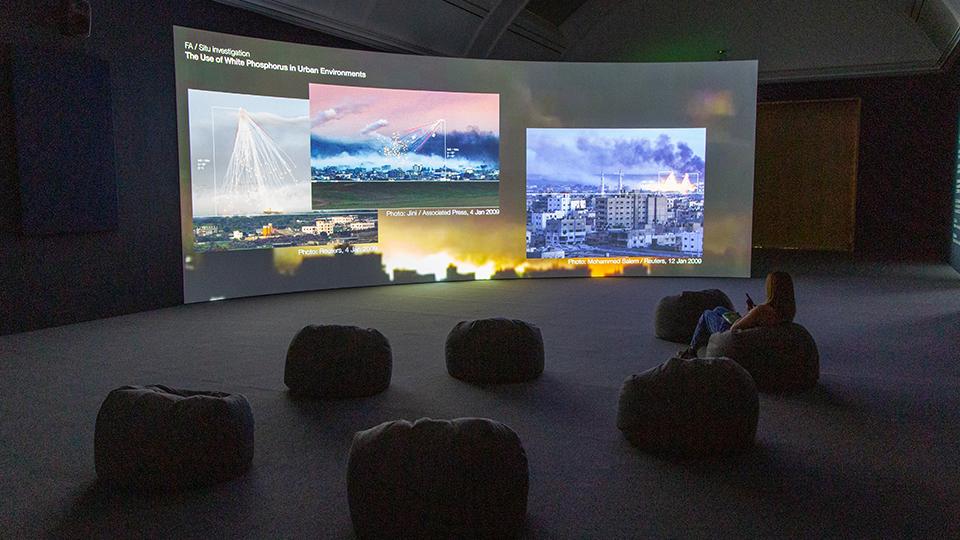
FA investigations into chemical attacks in Douma, Khan Sheikhoun and Al Lataminah, Syria, contributed to a growing body of evidence that the Syrian regime was culpable, while a report on herbicidal warfare in Gaza, published in 2019, exposed the intentional destruction by Israel of arable land deep into Palestinian territory, and with it the livelihoods of its residents.
Many of these investigations into ‘airborne violence’, including major new work on environmental racism in Louisiana’s ‘Cancer Alley’, are on display at the Whitworth Gallery, Manchester, as part of the 2021 Manchester International Festival. It is FA’s first exhibition in Manchester.
Reflecting the Whitworth’s commitment to platforming the role of art as a means of social change, the exhibition Cloud Studies features archival material, including maps, 3D printed models and contextual interpretive material related to the methodologies used by FA in their work, and runs from 2 July – 17 October 2021.
“I’m particularly keen on arts-like practice that goes beyond art, that goes beyond the realm of the gallery and the museum… this is about a way of art, the machinery of art, working in the world in an operational way. Actually making change happen. Forensic Architecture is a great example of that working.”
- Alistair Hudson, Director of the Whitworth, The University of Manchester
The Killing of Mark Duggan
Running this summer at the ICA, London, War Inna Babylon: The Community’s Struggle for Truth and Rights (7 July – 26 September), has been curated by anti-racism activists and community organisers Tottenham Rights, in association with independent curators Kamara Scott and Rianna Jade Parker.
The show chronicles the impact of state violence and institutional racism targeted at Britain’s Black communities since the arrival-upon-invitation of the ‘Windrush Generation’ of Caribbean migrants in the late 1940s.
Among the exhibitions is a visual presentation of FA’s 2019 investigation into the 2011 killing of Mark Duggan by police in north London. Using video and images, witness testimony, and an expert biomechanical report, FA’s work digitally recreated the scene of death to illustrate and interrogate the testimonies of police officers involved in the shooting.
They concluded that there was no evidence Duggan was holding a firearm when killed by police, contradicting an official report by the police watchdog. The investigation, which was commissioned by the Duggan family lawyers, helped the family receive a financial settlement in an out-of-court civil claim against the Metropolitan police.
In August 2021, a full investigation of the Mark Duggan case, written by Professor Weizman and the FA team, will be available as a hardback book, published by Cabinet Publications and MIT Press.
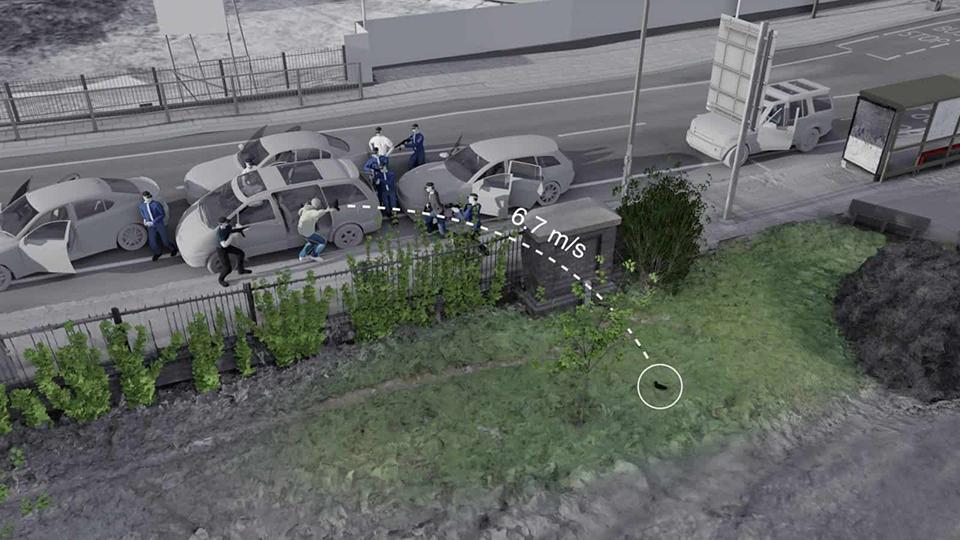
A global detective agency
From Argentina to Yemen, FA’s investigations to date have addressed human rights violations and other atrocities in some 27 countries, as well as the Mediterranean Sea, with subjects ranging from airstrikes and chemical weapons attacks, to disappearances, torture and detention, environmental violence, police violence and migration.
FA’s success has also led to the development a number of related agencies, including Forensic Oceanography, led by Dr Lorenzo Pezzani, a lecturer within the Department of Visual Cultures at Goldsmiths and convener of the MA Forensic Architecture programme in the Centre for Research Architecture, and filmmaker Charles Heller.
In 2018, Forensic Oceanography published its findings in the case of the Iuventa (image below) a rescue vessel operating in the Mediterranean which became emblematic of attempts by EU member states to close off the central Mediterranean as a migration route by criminalising rescue NGOs. The investigation contradicted the Italian prosecutor’s allegations that the vessel’s owners, the NGO Jugend Rettet, had been collaborating with people smugglers in the course of a rescue mission in 2016. That work continues to support advocacy efforts by Jugend Rettet at the heart of the EU’s moral crisis over its treatment of refugees and migrants.
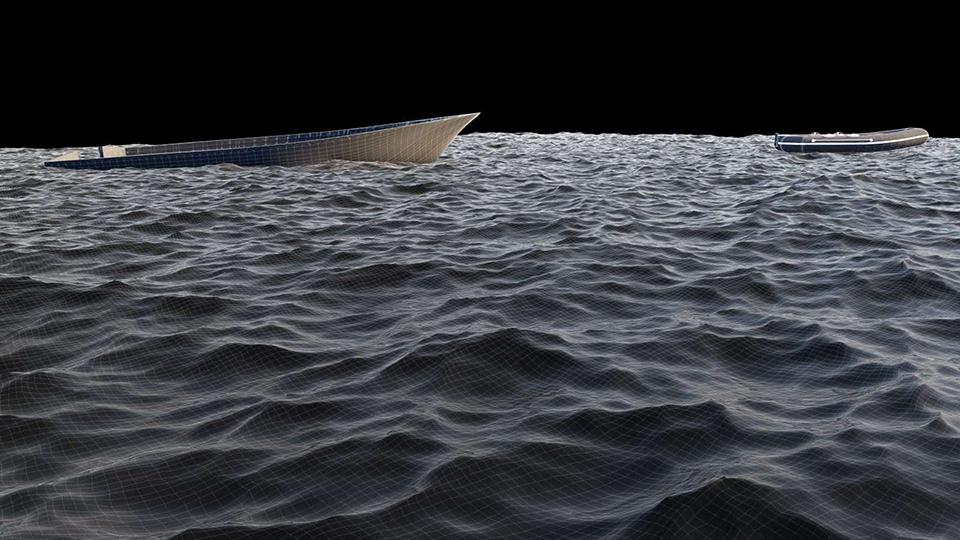
Previously, Pezzani and Heller’s Death by Rescue: The Lethal Effects of Non-Assistance at Sea had captured global media interest when it was released in 2016, as they reconstructed two shipwrecks which resulted in over a thousand deaths. The report exposed how EU policies – namely, the ending of state rescue operations and their replacement with unsuitable commercial vessels – led directly to these deaths. While decision makers had been warned the decision would lead to high fatality rates, they went ahead with the policy.
Just a few months ago, Pezzani and Heller established a new NGO called Border Forensics, which expands the scope of their work to multiple forms of border violence. Working in collaboration with migrant communities, activist groups, and civil society organisations, Border Forensics aims to build on the work of Forensic Oceanography to investigate and expose the violence linked to the existence and management of borders, with the aim of fostering ‘mobility justice’.
And in 2020, Dr Francesco Sebregondi, a research fellow with FA and a graduate of the Centre for Research Architecture at Goldsmiths, founded INDEX, an NGO aiming to investigate human rights violations committed by French police, primarily in the context of protests and custody. INDEX has already collaborated with major French media including Libération and Mediapart, bringing FA’s techniques into new fields.
“We take a piece of research and place it in the most antagonistic of forums - in courts, the media, human rights and truth commissions, citizen tribunals, and increasingly in the art and cultural domain. We understand forensics to not be a bureaucratical process, a providing of technical evidence to court, but a political and public practice. Truth has to be made public in order to operate.”
– Professor Eyal Weizman
